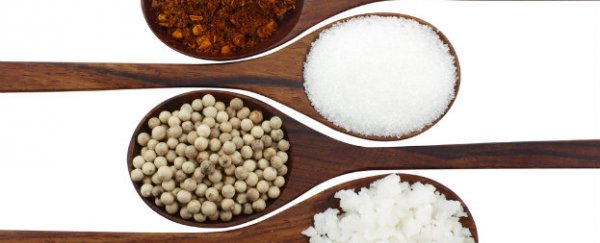Imagine if you could satisfy your sweet tooth without risking cavities or those few extra calories. This may sound too good to be true, but researchers in the United Arab Emirates have invented a spoon that can recreate flavours such as saltiness, sourness, bitterness, or sweetness, by using electricity - an invention that could be useful for those with dietary restrictions.
Researchers at the New York University Abu Dhabi invented the ingenius utensil using a new technology known as a 'digital taste simulator', which they also used to invent a similar 'digital lollipop' last year. This technology works by creating small changes in both the frequency and magnitude of electrical currents when the device is applied to the tongue, which simulate different taste sensations.
The team believes that tasting food should engage all your senses, and to incorporate this, the spoon uses different coloured lights - like blue for a salty taste - to heighten the perceived intensity of the flavour.
"Taste is not only taste. It's a multi-sensory sensation, so we need smell, colour, previous experiences, texture," Nimesha Ranasinghe, engineer and lead researcher of the study, told Aviva Rutkin from New Scientist. "I am trying to integrate different aspects of these sensations."
The spoon, which will be demonstrated this week at the ACM Multimedia conference in Florida, was tested on a group of people who used it to eat porridge. Participants judged it to be 40 to 83 percent successful at enhancing the taste, with bitterness being the hardest to recreate. Some participants also noted that the metallic taste of the electrodes was too overpowering, which is something that the researchers hope to work on next.
The spoon could be of particular benefit for patients with conditions such as diabetes or heart disease, who must reduce their sugar and salt intake.
Ranasinghe is continuing to work out how to produce complex flavours while tricking the brain into thinking that the flavour is real, and hopes that the spoon will be available on the market within the next few years.
Source: New Scientist
